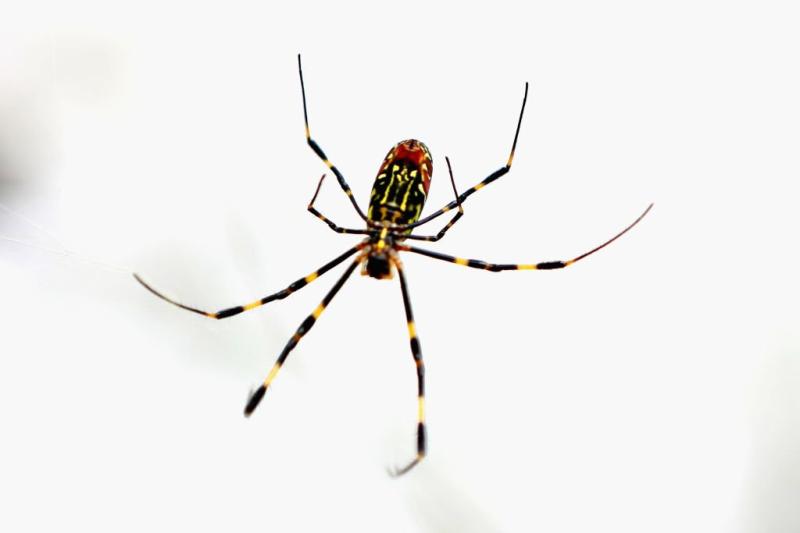Spiders Can Fly Hundreds of Miles Using Electricity
By: Pocket



Getty Images
On October 31, 1832, a young naturalist named Charles Darwin walked onto the deck of the HMS Beagle and realized that the ship had been boarded by thousands of intruders. Tiny red spiders, each a millimeter wide, were everywhere. The ship was 60 miles offshore, so the creatures must have floated over from the Argentinian mainland. "All the ropes were coated and fringed with gossamer web," Darwin wrote.
Spiders have no wings, but they can take to the air nonetheless. They'll climb to an exposed point, raise their abdomens to the sky, extrude strands of silk, and float away. This behavior is called ballooning. It might carry spiders away from predators and competitors, or toward new lands with abundant resources. But whatever the reason for it, it's clearly an effective means of travel. Spiders have been found two-and-a-half miles up in the air, and 1,000 miles out to sea.
It is commonly believed that ballooning works because the silk catches on the wind, dragging the spider with it. But that doesn't entirely make sense, especially since spiders only balloon during light winds. Spiders don't shoot silk from their abdomens, and it seems unlikely that such gentle breezes could be strong enough to yank the threads out—let alone to carry the largest species aloft, or to generate the high accelerations of arachnid takeoff. Darwin himself found the rapidity of the spiders' flight to be "quite unaccountable" and its cause to be "inexplicable."
But Erica Morley and Daniel Robert have an explanation. The duo, who work at the University of Bristol, has shown that spiders can sense the Earth's electric field, and use it to launch themselves into the air.
Every day, around 40,000 thunderstorms crackle around the world, collectively turning Earth's atmosphere into a giant electrical circuit. The upper reaches of the atmosphere have a positive charge, and the planet's surface has a negative one. Even on sunny days with cloudless skies, the air carries a voltage of around 100 volts for every meter above the ground. In foggy or stormy conditions, that gradient might increase to tens of thousands of volts per meter.
Ballooning spiders operate within this planetary electric field. When their silk leaves their bodies, it typically picks up a negative charge. This repels the similar negative charges on the surfaces on which the spiders sit, creating enough force to lift them into the air. And spiders can increase those forces by climbing onto twigs, leaves, or blades of grass. Plants, being earthed, have the same negative charge as the ground that they grow upon, but they protrude into the positively charged air. This creates substantial electric fields between the air around them and the tips of their leaves and branches—and the spiders ballooning from those tips.
This idea—flight by electrostatic repulsion—was first proposed in the early 1800s, around the time of Darwin's voyage. Peter Gorham, a physicist, resurrected the idea in 2013, and showed that it was mathematically plausible. And now, Morley and Robert have tested it with actual spiders.
First, they showed that spiders can detect electric fields. They put the arachnids on vertical strips of cardboard in the center of a plastic box, and then generated electric fields between the floor and ceiling of similar strengths to what the spiders would experience outdoors. These fields ruffled tiny sensory hairs on the spiders' feet, known as trichobothria. "It's like when you rub a balloon and hold it up to your hairs," Morley says.
In response, the spiders performed a set of movements called tiptoeing—they stood on the ends of their legs and stuck their abdomens in the air. "That behavior is only ever seen before ballooning," says Morley. Many of the spiders actually managed to take off, despite being in closed boxes with no airflow within them. And when Morley turned off the electric fields inside the boxes, the ballooning spiders dropped.
It's especially important, says Angela Chuang, from the University of Tennessee, to know that spiders can physically detect electrostatic changes in their surroundings. "[That's] the foundation for lots of interesting research questions," she says. "How do various electric-field strengths affect the physics of takeoff, flight, and landing? Do spiders use information on atmospheric conditions to make decisions about when to break down their webs, or create new ones?"
Air currents might still play some role in ballooning. After all, the same hairs that allow spiders to sense electric fields can also help them to gauge wind speed or direction. And Moonsung Cho from the Technical University of Berlin recently showed that spiders prepare for flight by raising their front legs into the wind, presumably to test how strong it is.
Still, Morley and Robert's study shows that electrostatic forces are, on their own, enough to propel spiders into the air. "This is really top-notch science," says Gorham. "As a physicist, it seemed very clear to me that electric fields played a central role, but I could only speculate on how the biology might support this. Morley and Robert have taken this to a level of certainty that far exceeds any expectations I had."
"I think Charles Darwin would be as thrilled to read it as I was," he adds.
 Article is LOCKED by moderator [smarty_function_ntUser_get_name: user_id or profile_id parameter required]
Article is LOCKED by moderator [smarty_function_ntUser_get_name: user_id or profile_id parameter required]



Murder hornets, flying electric spiders. What next?
Pretty cool article, SP.
I wonder how much control they have over their direction, speed, etc.
Hmmmm.....fascinating
That is just too cool!
I can see it now. Right before I get struck by lightning, I'm going to get covered in flying spiders. Awesome.
Great article, very interesting!
Some spiders use air currents to fly also.